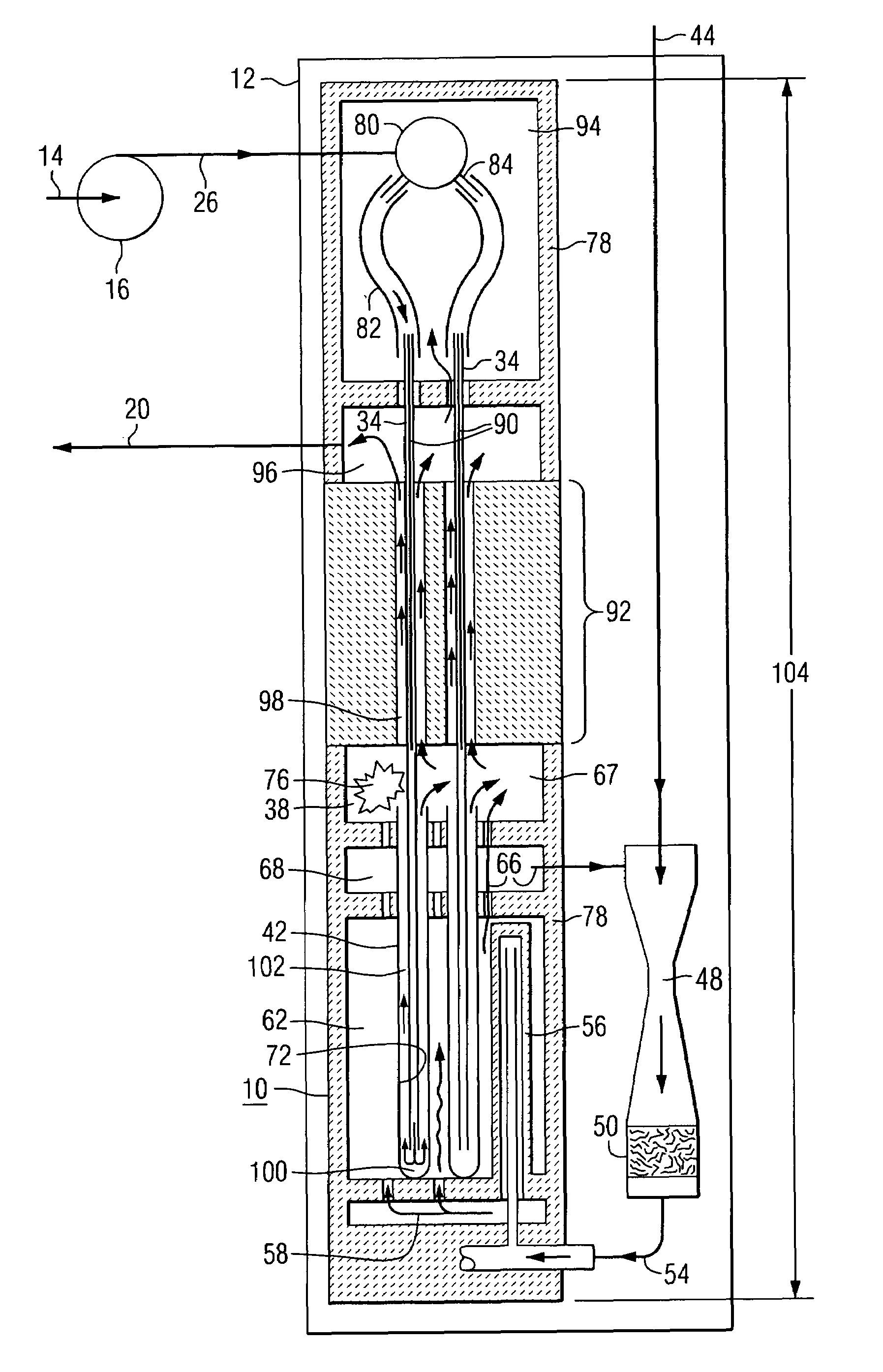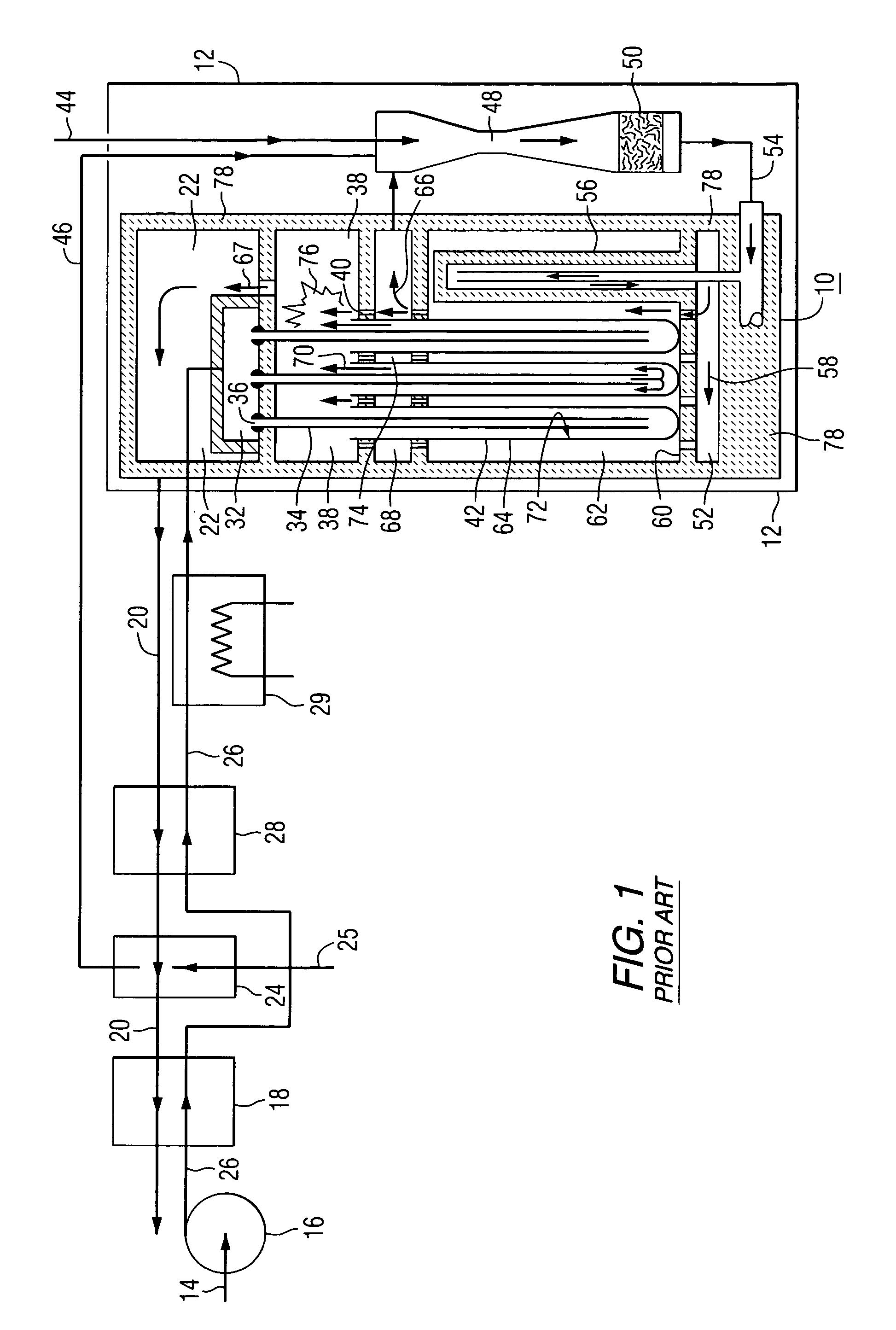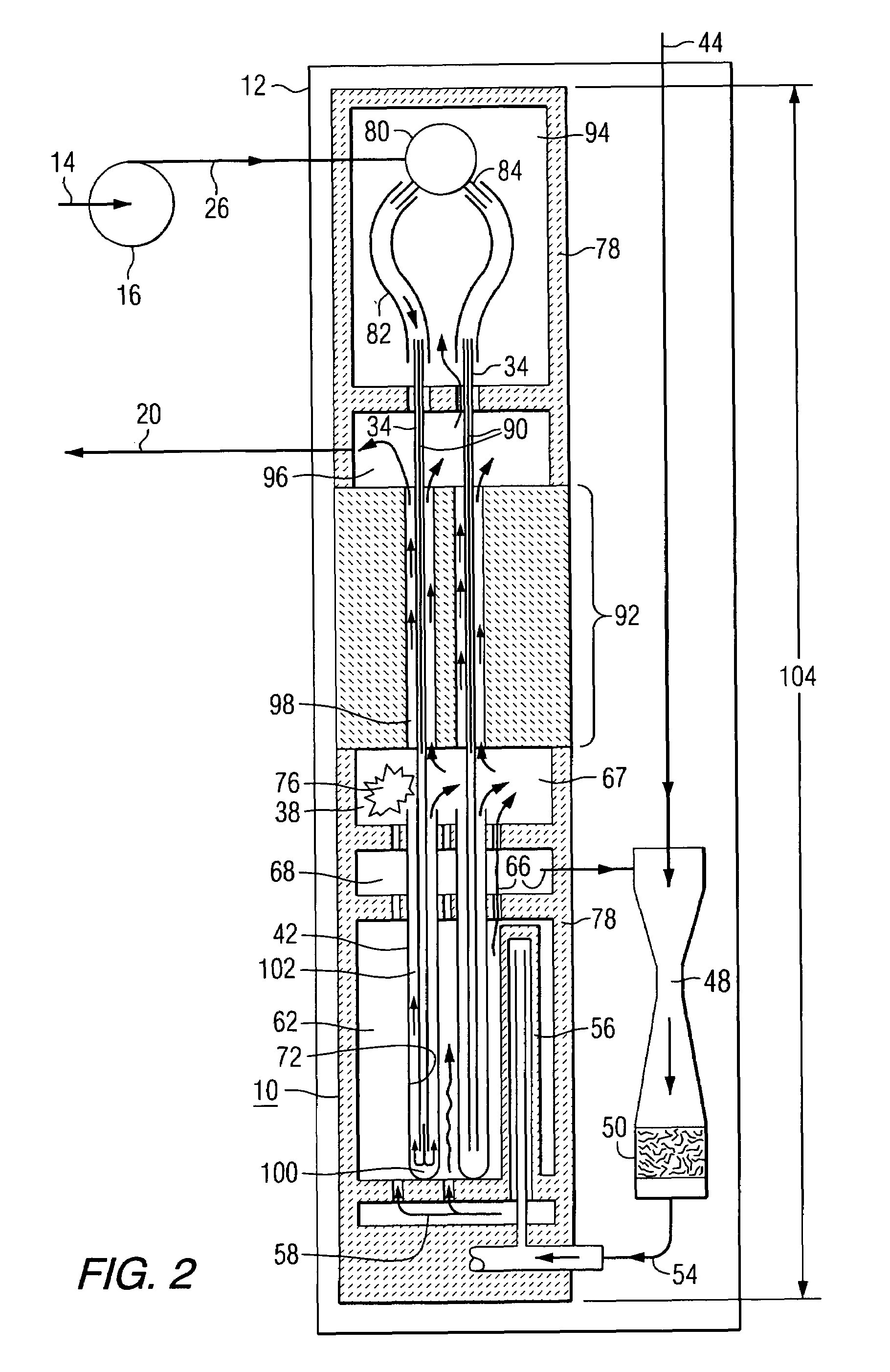Integral air preheater and start-up heating means for solid oxide fuel cell power generators
a fuel cell power generator and air preheater technology, applied in the direction of electrochemical generators, cell components, cell component details, etc., can solve the problems of high operating temperature of air delivery components, difficult fabrication, and high material cost, and achieve substantial equipment and ducting savings, simplifying the design of the generator
- Summary
- Abstract
- Description
- Claims
- Application Information
AI Technical Summary
Benefits of technology
Problems solved by technology
Method used
Image
Examples
Embodiment Construction
[0024]The fuel cells used inside the generator apparatus of this invention can be solid oxide electrolyte of any type or configuration. However, for purposes of simplicity, tubular, solid oxide electrolyte fuel cells will be discussed as an exemplary type useful in this invention, and the description herein-after will generally relate to that type, which shall in no way be considered limiting as to the scope of the invention.
[0025]Solid oxide electrolyte fuel cells (“SOFC”) are highly efficient devices that convert chemical energy into electricity. They operate at atmospheric or elevated pressures at a temperature of approximately 1000° C. to produce electricity using a variety of fossil fuels such as coal derived fuel gas, natural gas, or distillate fuel. The temperature of the exhaust gases from the cells is between 500° C. to 850° C., a temperature which is attractive for cogeneration applications or for use in bottoming cycles for all-electric central station power plants.
[0026]...
PUM
| Property | Measurement | Unit |
|---|---|---|
| temperature | aaaaa | aaaaa |
| temperature | aaaaa | aaaaa |
| temperature | aaaaa | aaaaa |
Abstract
Description
Claims
Application Information
 Login to View More
Login to View More - R&D
- Intellectual Property
- Life Sciences
- Materials
- Tech Scout
- Unparalleled Data Quality
- Higher Quality Content
- 60% Fewer Hallucinations
Browse by: Latest US Patents, China's latest patents, Technical Efficacy Thesaurus, Application Domain, Technology Topic, Popular Technical Reports.
© 2025 PatSnap. All rights reserved.Legal|Privacy policy|Modern Slavery Act Transparency Statement|Sitemap|About US| Contact US: help@patsnap.com



